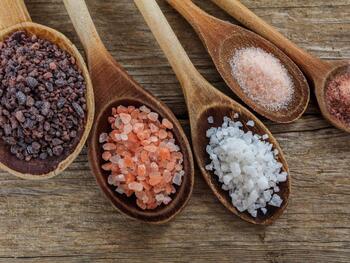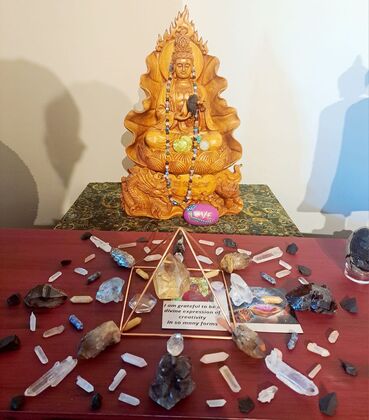
What remains after typical salt is “chemically cleaned” is sodium chloride – an unnatural chemical form of salt that your body recognizes as something completely foreign. Inorganic sodium chloride upsets your fluid balance and constantly overburdens your elimination systems, which can impair your health.
For every gram of sodium chloride that your body cannot get rid of, your body uses twenty-three times the amount of cell water to neutralize the salt. Eating common table salt causes excess fluid in your body tissue, which can contribute to:
* Unsightly cellulite
* Rheumatism, arthritis and gout
* Kidney and gall bladder stones
When you consider that the average person consumes 4,000 to 6,000 mg of sodium chloride each day, and heavy users can ingest as much as 10,000 mg in a day, it is clear that this is a serious and pervasive issue.
Sea salt is harvested ecologically from a pristine clean shore and dried without artificial heat. All of the trace minerals found in nature’s own salt have been left undisturbed and in delicate balance. Unlike table salt, white sea salt crystals (also refined), and unrefined salt from refineries or ancient seabeds, chemically resembles almost exactly amniotic fluid, the ‘mini-ocean’ for the human fetus.
Sea salt is cultivated and harvested without synthetic chemical fertilizers or pesticides, and packed under pharmaceutical conditions.
Table Salt Vs. Sea Salt
Besides the difference in the manufacturing process, sea salt and table salt differ in the following ways:
* While sodium and chlorine are the only minerals contained in table salt, sea salt has other minerals like iron, sulfur, and magnesium naturally present in them. This increases the nutritive value of sea salt as compared to table salt. The various minerals present in sea salt helps us to maintain a healthy balance of the various electrolytes in the body.
* The refining process of table salt strips it of all of its minerals, other than sodium and chloride. This makes it an unnatural substance as compared to sea salt, and contributes to high blood pressure, heart and kidney diseases. On the other hand, health benefits of sea salt include, inducing proper sleep, promoting efficient working of the liver, kidneys and the adrenal glands. Sea salts also boost the immune system of the body and don’t cause high blood pressure like refined table salt.
* Although, due to the higher mineral content, sea salt may be considered to be a healthier choice than table salt, it has its own drawbacks. One major disadvantage of sea salt is that it is a poor source of iodine. The iodine that is added during the refining process of table salt makes it a better source of iodine than sea salt.
* Another health concern that sea salt raises, is the fact that it is obtained from sea water that contains several impurities. The sea water is neither boiled nor treated, as that would make it lose the minerals that gives it all its nutritive value.
* Table salt is fine, white crystals. Sea salt on the other hand may have a slight grayish color if they are from the coastal areas of France or may pinkish hue if it came from some other exotic locale. It may be coarse or fine grained.
* Due to the presence of many minerals, sea salt is not as ‘salty’ as table salt. It may be slightly flavored.
Himalayan Salt
I use the Crystal Salt from the Himalayas because it does not burden your body as other salts do. It is very difficult for your body to absorb too much crystal salt since there are powerful and effective feedback loops that regulate this process. Natural crystal salt always promotes a healthy balance and does not contribute to high blood pressure like typical table salt.
Crystal Salt’s array of elements forms a compound in which each molecule is inter-connected. The connectedness allows the vibrational component of the 84 trace elements present in the salt to be in harmony with each other and adds to the ability to promote a healthy balance. When it comes to the power of natural salt, nothing compares to Himalayan Crystal Salt.
The salt’s unique structure also stores vibrational energy. All the crystal salt’s inherent minerals and trace elements are available in colloidal form — meaning they are so small your cells can readily absorb them.
I’d say that informing the public on a new program that sodium chloride is the same as sea salt was a huge disservice, wouldn’t you?



 RSS Feed
RSS Feed